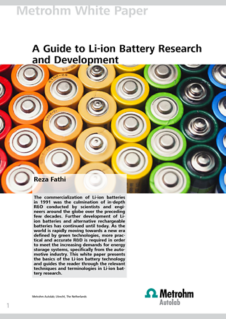[1] International Energy Agency. Executive summary. Global EV Outlook 2023. https://www.iea.org/reports/global-ev-outlook-2023/executive-summary (accessed 2024-02-21).
[2] Carey, N. Global Electric Car Sales Rose 31% in 2023 - Rho Motion. Reuters. London, UK January 11, 2024.
[3] Factorial. High-Performing Solid-State Batteries. https://factorialenergy.com/ (accessed 2024-02-21).
[4] Xiao, Y.; Wang, Y.; Bo, S.-H.; et al. Understanding Interface Stability in Solid-State Batteries. Nat. Rev. Mater. 2019, 5 (2), 105–126. DOI:10.1038/s41578-019-0157-5
[5] Vadhva, P.; Hu, J.; Johnson, M. J.; et al. Electrochemical Impedance Spectroscopy for All-Solid-State Batteries: Theory, Methods and Future Outlook. ChemElectroChem 2021, 8 (11), 1930–1947. DOI:10.1002/celc.202100108
[6] Fuchs, T.; Mogwitz, B.; Otto, S.-K.; et al. Working Principle of an Ionic Liquid Interlayer During Pressureless Lithium Stripping on Li6.25Al0.25La3Zr2O12 (LLZO) Garnet-Type Solid Electrolyte. Batter. Supercaps 2021, 4 (7), 1145–1155. DOI:10.1002/batt.202100015
[7] Lazanas, A. Ch.; Prodromidis, M. I. Electrochemical Impedance Spectroscopy─A Tutorial. ACS Meas. Sci. Au 2023, 3 (3), 162–193. DOI:10.1021/acsmeasuresciau.2c00070
 Sdílet článek
Sdílet článek

